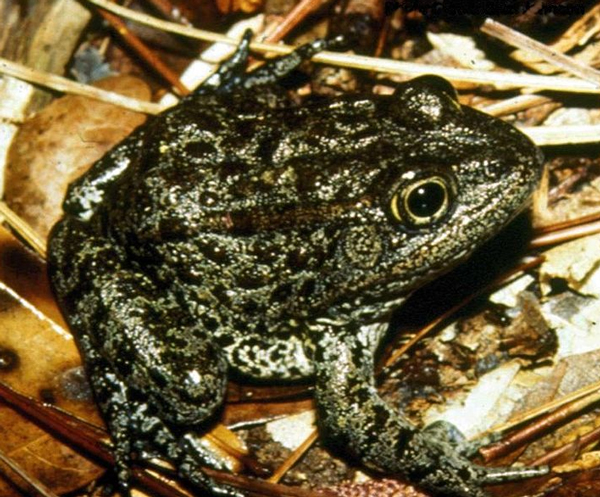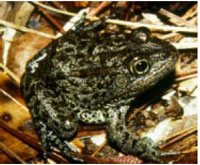Land conservation proposal would triple the habitat of Rana capito sevosa
The Mississippi gopher frog (Rana capito sevosa) an endangered frog that is known to live only in the state of Mississippi may have more habitat allotted to it due to a land conservation proposal introduced by the federal government. That proposal, if approved, would triple the area given the frog, and list the area as critical habitat. The gopher frog is the only frog listed as endangered in the Southeastern United States. The area, primarily in Mississippi, also includes habitat in Louisiana that was the frog's last known breeding ground in that state. The last time the frog was spotted in Louisiana was in 1967.

U.S. Fish and Wildlife Service
The gopher frog population in the wild is currently estimated at 100 individuals as of 2011. There are approximately 1,500 gopher frogs in zoos, the result of a captive breeding effort at the Henry Doorly Zoo in Omaha, Nebraska.arvae
In 2010, the U.S. Fish and Wildlife Service proposed 2,000 acres in the state's Harrison, Forrest Perry, and Jackson counties to serve as habitat. This time, the government is proposing 1,600 acres in neighboring Louisiana and 5,400 acres in Jackson, Harrison, Forrest and Perry counties in Mississippi.
The frog is unique among amphibians in that in order to survive, regular brush fires are necessary to clear away brush and trees in areas in which the frog lives. The collared lizard also benefits from fires.
The gopher frog population in the wild is currently estimated at 100 individuals as of 2011. There are approximately 1,500 gopher frogs in zoos, the result of a captive breeding effort at the Henry Doorly Zoo in Omaha, Nebraska.
The Mississippi gopher frog is about three inches in length and lives in abandoned and active burrows primarily dug by the gopher tortoise, abandoned holes dug by mammals as well as in old tree stumps. It deposits its eggs in bodies of water that must fill up and then dry out or the area will not be suitable habitat for breeding. This is of concern as commercial development of these areas result in dredging, which have adverse effects on breeding ponds. Residential development is also of concern, as fires are essential to the frog's survival in the wild, and the presence of such developments will reduce the frequency of fires.



